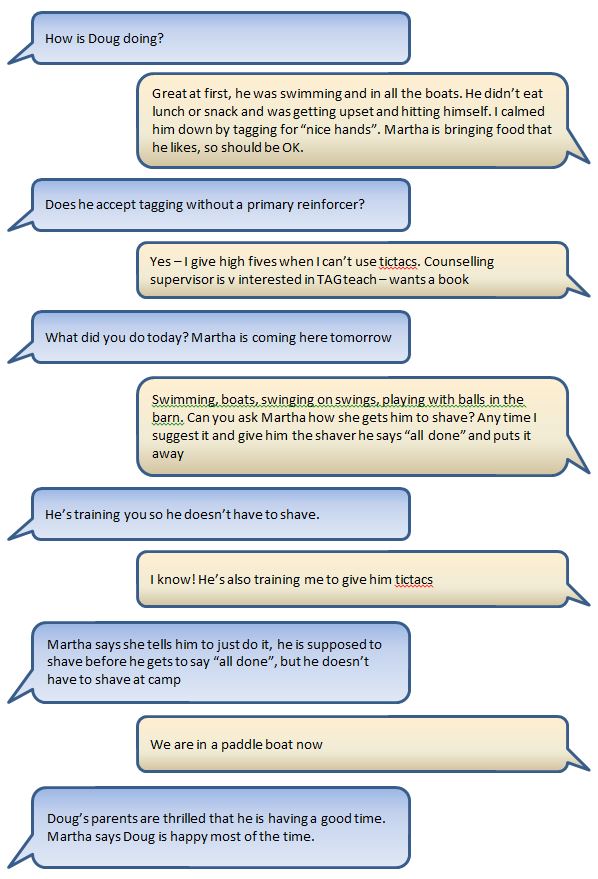With TAGteach the coach gives the athlete a very specific goal for each time they take their turn. This goal is called a tag point, and defines the precise movement that the coach will watch for and will reinforce with a tag if the athlete succeeds.
Here are four practical tips that TAGteachers know and that your athletes wish you knew about getting maximum performance in the shortest amount of time with the least amount of stress. Each tag point must meet these four criteria:
- Ask for what you do WANT. Be very clear about exactly what your athlete needs to do right in the next moment. Keep this instruction uncluttered by removing descriptions of the many ways it could be done incorrectly.
- Ask for ONE THING at a time. Think about what will be that one key element on which the athlete should put their full focus on the next try.
- Be sure that you can clearly OBSERVE the exact moment that the athlete meets your criteria for success.
- Formulate your final instruction to the athlete in FIVE words or less. This is all they will remember anyway as they go to take their turn, so make those final words count! Make sure these words tell the athlete the exact, specific detail that you will be watching for and that they should be thinking about.
Watch this video of a sport coaching session using TAGteach. There are lots of great coaching skills displayed by these coaches but most important of all is the WOOF factor. As you watch, notice how these skilled coaches implement the four tips discussed here.
The click sound you hear in the video is the sound of success! We call this a tag. This tells the athlete that she has met the criteria set by the coach (the tag point) for that turn. Read more about tag points.
The click sound you hear in the video is the sound of success! We call this a tag. This tells the athlete that she has met the criteria set by the coach (the tag point) for that turn. Read more about tag points.
Learn More About the Extraordinary Power of TAGteach
Now available is a recorded webinar presented by Karin Coyne and Abigail Curtis along with TAGteach co-founders Joan Orr and Theresa McKeon on the topic of TAGteach for sport coaching. Sport coaching is where TAGteach got its start and where it truly excels. If you are a coach or an athlete this is must have information and a low cost way to learn about TAGteach.
Click here for more information or to register
Use the code ILOVETAGTEACH for 50% off until Thurs Nov 7, 2013 (price will be $9.97)
100% money back satisfaction guarantee
Because we want to get this information into the hands of more coaches, we will give you a discount code for you to give to your coach or your child's coach to access the recorded webinar for free. Coaches need to know this stuff! You will get an email with the free discount code after you register for the recorded webinar.
Now available is a recorded webinar presented by Karin Coyne and Abigail Curtis along with TAGteach co-founders Joan Orr and Theresa McKeon on the topic of TAGteach for sport coaching. Sport coaching is where TAGteach got its start and where it truly excels. If you are a coach or an athlete this is must have information and a low cost way to learn about TAGteach.
Click here for more information or to register
Use the code ILOVETAGTEACH for 50% off until Thurs Nov 7, 2013 (price will be $9.97)
100% money back satisfaction guarantee
Because we want to get this information into the hands of more coaches, we will give you a discount code for you to give to your coach or your child's coach to access the recorded webinar for free. Coaches need to know this stuff! You will get an email with the free discount code after you register for the recorded webinar.
More Sports Posts
7 Simple Steps to Getting the Most from Your Training Sessions
Learning to Swim with TAGteach (includes our most favorite TAGteach video)







